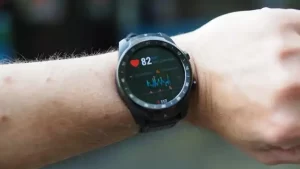Why seniors should receiving COVID-19 vaccines first?
- Statins Lower Blood Lipids: How Long is a Course?
- Warning: Smartwatch Blood Sugar Measurement Deemed Dangerous
- Mifepristone: A Safe and Effective Abortion Option Amidst Controversy
- Asbestos Detected in Buildings Damaged in Ukraine: Analyzed by Japanese Company
- New Ocrevus Subcutaneous Injection Therapy Shows Promising Results in Multiple Sclerosis Treatmen
- Dutch Man Infected with COVID-19 for 613 Days Dies: Accumulating Over 50 Virus Mutations
Why seniors should receiving COVID-19 vaccines first?
Why seniors should receiving COVID-19 vaccines first? Science: New research reveals why elderly people should prioritize vaccinations against the new coronavirus.
Compared with prioritizing the COVID-19 vaccine for other age groups, vaccinating the elderly with this vaccine first will save more American lives. The slower the introduction of the COVID-19 vaccine and the wider the spread of the SARS-CoV-2 coronavirus, the more important it is to give them priority in vaccination.
This is a new paper titled “Model-informed COVID-19 vaccine prioritization strategies by age and serostatus” published online by researchers from the University of Colorado at Boulder in the Journal of Science on January 21, 2021. The key conclusion. This paper uses mathematical models to predict how different vaccine distribution strategies in countries around the world will work.

This study provides the basis for the policy recommendations of the Centers for Disease Control (CDC) and the World Health Organization (WHO) that give priority to the elderly rather than medical workers.
Now, when policymakers decide how and whether to implement this recommendation, this paper with interactive tools represents the numbers behind this difficult decision.
The co-corresponding author of the paper, Daniel Larremore, a computational biologist in the Department of Computer Science at the University of Colorado Boulder Institute of Frontiers in Biology, said, “Common sense shows that you must first protect the elderly and the most vulnerable in the population. But common sense also shows that, You have to protect the front-line people (such as grocery store clerk and teachers) first, who are at a higher risk of exposure. When common sense leads you in two different directions, mathematics can help you make decisions.”
For this research, Larremore and the co-corresponding author of the paper, Kate Bubar, a graduate student in the Department of Applied Mathematics at the University of Colorado Boulder, collaborated with colleagues from the Harvard Chen Zengxi School of Public Health and the University of Chicago.
They referenced demographic information from different countries, as well as the latest data on the number of people who tested positive for COVID-19, the speed of the virus’s spread, the speed of vaccine launches and their estimated effects.
They then simulated what would happen in five different situations. In each case, different groups of people were vaccinated first: children and adolescents; adults between 20 and 49 years old; adults 20 or older; 60 years or older Adults above (considering that about 30% of eligible people may refuse). In the fifth case, anyone who wants a vaccine can get the vaccine with sufficient supply.
Results from the United States, Belgium, Brazil, China, India, Poland, South Africa, Spain, and Zimbabwe are included in this paper, and more countries are included in the online tool.
Depending on the local situation, different strategies are effective or bad, but there are some key findings. In most cases, in different countries, giving priority to vaccinating adults over 60 can save the most lives.
Larremore said, “Age is the strongest predictor of vulnerability. As you age, your likelihood of dying from COVID-19 increases exponentially.” He pointed out that although pre-existing conditions such as asthma will increase Risk of serious illness or death, but age will increase vulnerability even more.
These researchers also pointed out that although the vaccines now distributed are thought to have a 90 to 95% chance of being protected from serious diseases, they still don’t know how they can prevent infection and spread. If they cannot be blocked well, and asymptomatic spreaders abound, then it is most meaningful to vaccinate the elderly. Even if nothing else, they can be protected from serious diseases.
Only when the virus is under control and vaccines are known to prevent infection and spread well, is it necessary to give young people a priority to vaccinate. But this is not the current situation in the United States.
Bubar said, “For those front-line workers who may be frustrated because they are not among the first vaccinated people, we hope this research provides some clear information. We realize that this is for them. A huge sacrifice, but our research shows that it will save lives.”
They found that faster vaccine promotion would also help. For example, if all other conditions are the same, if the vaccine promotion speed doubles the current speed under the current transmission conditions, the mortality rate of COVID-19 can be reduced by about 23% in the next three months, which is equivalent to 65,000 fewer people died.
The paper also proposes that when SARS-CoV-2 has infected a large number of people and the vaccine is in short supply, it may make sense to require young people who have tested positive to be vaccinated later.
Larremore said, “Our research shows that prioritizing people who have not yet been infected with SARS-CoV-2 can allow communities with severe epidemics to make full use of the first batch of vaccines, and may achieve some herd immunity faster.”
These researchers emphasize that the vaccine itself is not the only strategy to help defeat COVID-19. Larremore said, “In order for vaccines to reach people before the virus is infected, we must not only quickly roll out vaccines and deliver them to the most vulnerable people. We must also use masks, distance and smart policies to stop this. The spread of the virus.
(source:internet, reference only)
Disclaimer of medicaltrend.org



